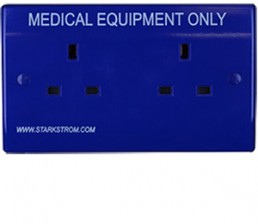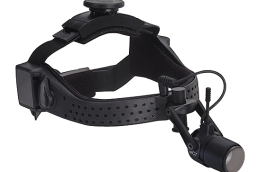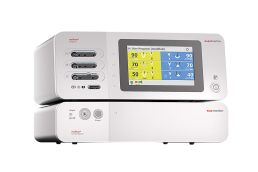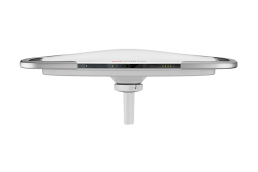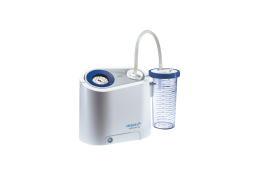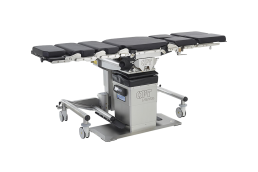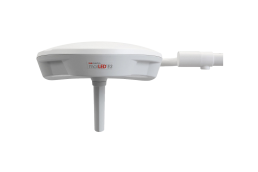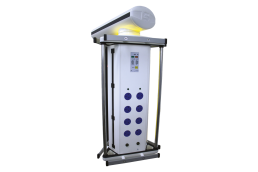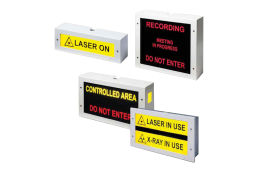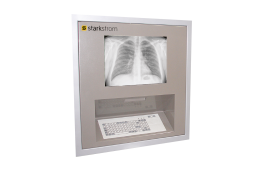Safety Behind The Socket
The correct and safe earthing of medical locations to the latest standards is required to prevent electric shock hazards. Electric shocks generally fall within two main categories: macro-shocks and micro-shocks, both of which can be harmful and fatal.
Macro-shocks are the most common type of electrocution. There is some inconsistency in the medical world as to the definition of macro-shock. Some sources claim any current that passes through the skin and into the body that is larger than 10mA is considered a macro-shock; other sources claim that it must pass through the body trunk, and yet still other sources claim it must pass through the heart. Macro-shock could be defined as “a strong electric shock resulting from current that has passed through the trunk, especially arm to arm and therefore through the heart, with contact to the source through two different intact skin areas.”
Macro-shock levels will cause different effects. At the lower end it could produce a tingling sensation and some muscle contraction. At the upper end it may produce a massive jolt, which in certain circumstances, could result in death. If a patient is unconscious or sedated, then he or she cannot inform clinical staff that a shock is being received. Possible sources of macro-shock are direct contact of the body with an electrified equipment chassis, poorly designed or malfunctioning electrophysiology equipment, melted or damaged power cords, lightning.
A number of steps can be taken to reduce the possibility of a macro-shock. These include:
- Ensuring that all accessible conductive surfaces are earthed.
- Ensuring that in any given location there is only one Earth present, limiting opportunities for excessive potential difference.
- Ensuring that in any given location there is only one electrical supply phase present.
Micro-shock is the passage of a low level of electricity through the body which causes no perceptible sensation. The threshold of sensation is at about the 1mA level. The subject cannot detect currents below this level. These low level events are of no consequence unless they pass directly through the heart. For a small area, such as the end of a fluid filled cardiac catheter, currents as low as 10μA(0.01mA) could trigger ventricular fibrillation.
A patient undergoing any procedure which involves the placing of an electrical conductor, part of which is exposed in the central circulatory system, is particularly at risk. In this context, an electrical conductor includes insulated wires such as cardiac pacing electrodes or inter-cardiac ECG electrodes, or an insulated tube (catheter) filled with conducting fluid inserted into the central circulatory system.
Earthing
Equipotential Bonding Busbars (EBB) are designed to help create the same electrical potential (to within 0.1 ohms) between the EBB and all bonded metal objects in the medical location and provide easy visual inspection and identification of connected circuits. This also applies to Earth Reference Bars (ERB). Both EBB and ERB enhance safety for patients and clinical staff by reducing the likelihood of electric shocks and help improve the process of fault detection and correction, saving the hospital time and money.
Starkstrom offers:
- Equipotential Bonding Busbar – (EBB) Type 8 – (suitable for Group 1 & 2 medical locations)1
- Earth Reference Bar (ERB) Type 7 – (suitable for Group 1 & 2 medical locations)2
- EBB/ERB Type 0 – (suitable for Group 1 medical location)1
Reference:1 IET / BS7671 Standard; 2 Archived MEIGAN Standard
All earth connections to the EBB or ERB are by means of a dedicated cable from each medical equipment socket or exposed metalwork, allowingeasy visual inspection and periodic testing.
Electrical Sockets
Blue ‘Medical Equipment Only’ Sockets are designed to distinguish them from non-IPS electrical sockets. This helps ensure medical equipment is plugged into IPS sockets and non-medical equipment is plugged into non-IPS sockets. This ensures that IPS sockets are in compliance with BS7671 Installation standard; have enhanced electrical earth separation (if required) by having separate earth connections for circuits and infrastructure.
The Blue ‘Medical Equipment Only’ Sockets have a low profile moulded face-plate with antimicrobial and antifungal properties that help promote infection control. Fixing screws are not visible on the surface making them easy to clean and helping prevent dust collection reducing the likelihood of contamination.
Supplementary Equipotential Earth Bonding (SEEB) Plugs and Sockets
Starkstrom’s SEEB Plugs and Sockets are fundamental increasing an equipotential earth bonded zone and helping to prevent significant touch voltages within the medical location. Under BS7671 Standard, the following requirements for equipotential earth sockets (EES) must be followed:
- Group 1: a minimum of one EES per patient location.
- Group 2: a minimum of four EES but not less than 25% of the number of medical IT socket outlets provided per patient location.
All medical electrical equipment or exposed conductive surfaces within the medical location, that are not equipotentially bonded as part of the permanent medical electrical installation, should be connected to a SEEB Socket using a SEEB Plug and permanently fitted with a highly flexible conductor: flying earth lead.


